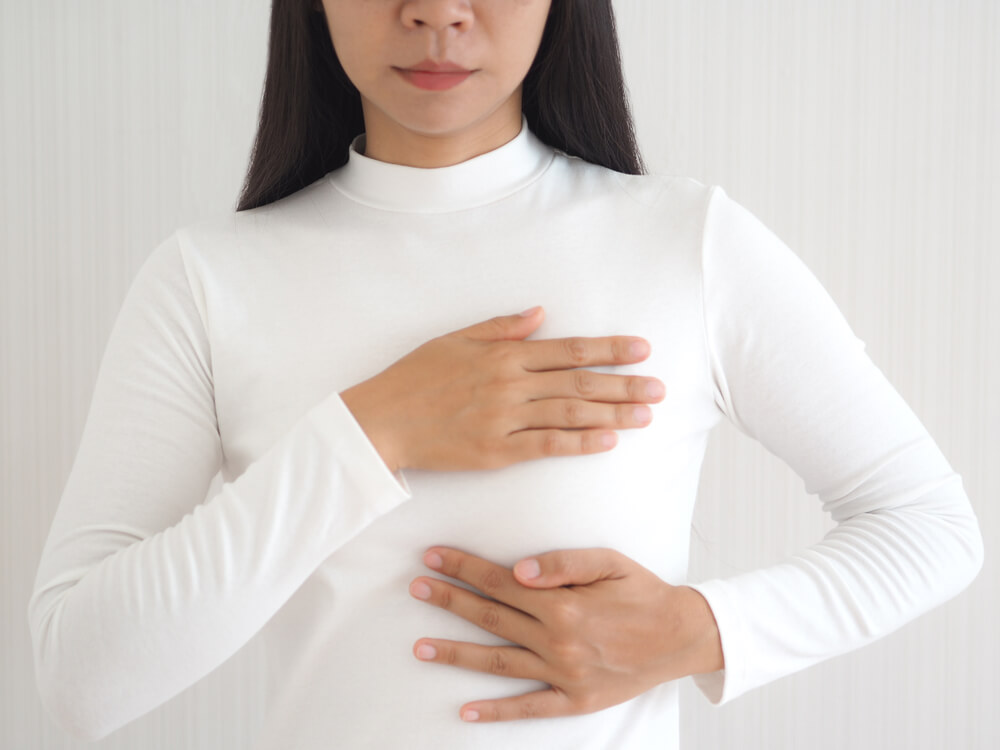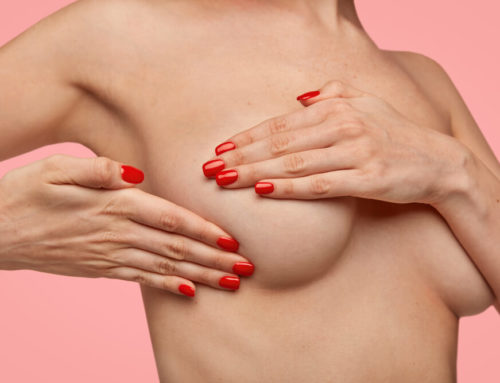What Are Fibrocystic Breast Changes?
The term “ fibrocystic breast changes” sounds frightening, but rest assured, there isn’t anything to worry about. Fibrocystic breasts are breasts that have a particular texture, which is commonly described as like ropes or lumps. Because of this feeling of “lumpiness” in the breasts, it is easy for someone doing a self-examination to confuse such changes with cancer. However, these lumps are not actually tumors, but rather cysts, which are bubbles of tissue (groups of cells with a common purpose, like skin, muscle, or fat) that contain fluid, air, or other pieces of tissue. Tumors, on the other hand, are solid masses of a specific type of tissue.
Tumors and cysts also form in different ways. Tumors are cancerous growths, caused by genetic mutations that lead to alterations in the growth and reproduction of cells. Cysts can form from a variety of causes, including infections and blockages in the body, but rarely as a side-effect of cancer. Fibrocystic breast cysts, as with most cysts, are growths that are not caused by cancer. They are also benign, meaning that they do not spread throughout the body and usually present minimal health risk.
So, fibrocystic breast changes are when the texture of the breast tissue changes to a texture like ropes or fibers because of cysts. There are different degrees to this texture, so for some people, it might be difficult to detect in an examination, but in others, it will be more difficult to examine the breasts at all due to the pain caused by compressing the cysts. Individual cysts tend to feel round, smooth, and slightly squishy, almost like rubber. They are most likely to be felt in the upper portion of the breast, close to the armpit. It is very uncommon for fibrocystic breast changes to occur in only one breast but not the other, so the changes will usually be very similar in both breasts.

The Formation of Fibrocystic Tissue
As mentioned, cysts can form in various ways; more precisely, specific types of cysts tend to form from specific processes. The cysts that cause the changes in breast texture form over time, as fluid and debris collect in the breasts, particularly in the milk-producing glands. These glands are common sites of cyst formation because they produce and secrete fluid, which may also trap debris like dead cells. Failure of this fluid and debris to be properly drained and recycled by the body can result in it collecting into a cyst. These cysts start out microscopic, but they can grow over time as more and more material becomes trapped. This process can take many years, so it tends to occur in people who are at the age of 30 or above.
The main driver of cyst formation in fibrocystic breast changes is sex hormones. In particular, progesterone and estrogen cause the gland tissue to grow. This growth process makes it more likely for fluid and debris to be trapped and encased by the growing tissues, forming a cyst. The growth of these glands can cause the release of even more hormones, which influence the cells around the growing glands, making further cyst growth even more likely. The abnormal shape of the cysts can also prevent milk from being properly reabsorbed, causing it to become trapped and form new cysts.
Because this circulation of fluid is caused by hormonal changes, it tends to begin in puberty and end at menopause. As such, people who have gone through menopause are significantly less likely to gain this condition, if they haven’t already. Someone who has fibrocystic changes in breast tissue may also notice the cysts disappear after menopause.
Nevertheless, such fibrocystic breast conditions are very common, occurring in about 60% of women. Because the condition is both benign and common, it is considered a normal variation of breast tissue, and the name was changed from “fibrocystic breast disease” to more neutral terms, such as “ fibrocystic breast changes ” of “fibrocystic breasts.” Fibrocystic breasts are not a serious threat to health and do not block milk production, though they may result in uncomfortable symptoms that a person experiencing them would want to limit or treat. Because they are driven by hormone cycles, which fluctuate over time, these symptoms may also vary in intensity in a specific person over time.
Management of Fibrocystic Breasts
It should be noted that all breast lumps should be assessed by medical professionals, due to the risk that they may be cancerous. However, other than the lumps themselves, there are common signs of fibrocystic breast changes. The breasts may be painful or tender to the touch, the nipple may secrete dark brown or green fluid unprompted (though it will not contain blood), and pain or “lumpiness” may increase monthly, in the time between ovulation to just prior to the period. The fact that these symptoms are so general and can be mistaken for many other things, including breast cancer, demonstrates the importance of seeing a professional and getting the proper screening.
If you have been diagnosed with fibrocystic breasts, your doctor will likely have treatment suggestions. The cysts cannot be “cured,” so treatment tends to focus on reducing unwanted symptoms. Anti-inflammatory medicines and painkillers, like Aspirin and Tylenol, are commonly prescribed to treat pain or tenderness. Oral contraceptives might be used to regulate hormone balance. A doctor might even drain fluid from the cysts if other treatment methods fail to relieve pain.
Other conditions might affect the likelihood of cyst formation and, therefore, the intensity of symptoms. For example, thyroid disease is known to exacerbate fibrocystic breast changes due to the fact that it alters the body’s hormonal balance. Taking sex hormone therapy, such as following a hysterectomy, also introduces the body to the hormones that cause these cysts to build up. In this case, it is important to work with a doctor to develop a medication regimen that will address the problem that hormones were prescribed for while not being too harsh on the breast tissue.
However, other suggested treatments, such as vitamin supplements, are of unknown effectiveness, due to the lack of replication in the studies suggesting them. Because of how much is unknown, treatment and management of symptoms tends to be highly individualized. Patients tend to discover what seems to help make them more comfortable and stick with those methods.
There is also still much that is unknown about fibrocystic breast changes overall. It is generally not thought to increase cancer, but there may be a small increase if the cells develop hyperplasia, meaning that too many cells are growing and they stop responding to normal cell growth controls due to the hormonal imbalances caused by the condition. The theory goes that this makes genetic changes more likely, slightly increasing the chance that some of them could lead to cancer. There have also been studies, with mixed results, about whether or not caffeine leads to an increased likelihood of developing fibrocystic breasts.
As mentioned, the best course of action if you suspect you are experiencing fibrocystic breast changes is to consult your doctor for more information about your specific case. However, it does not hurt to be informed about the condition going into your meeting.





